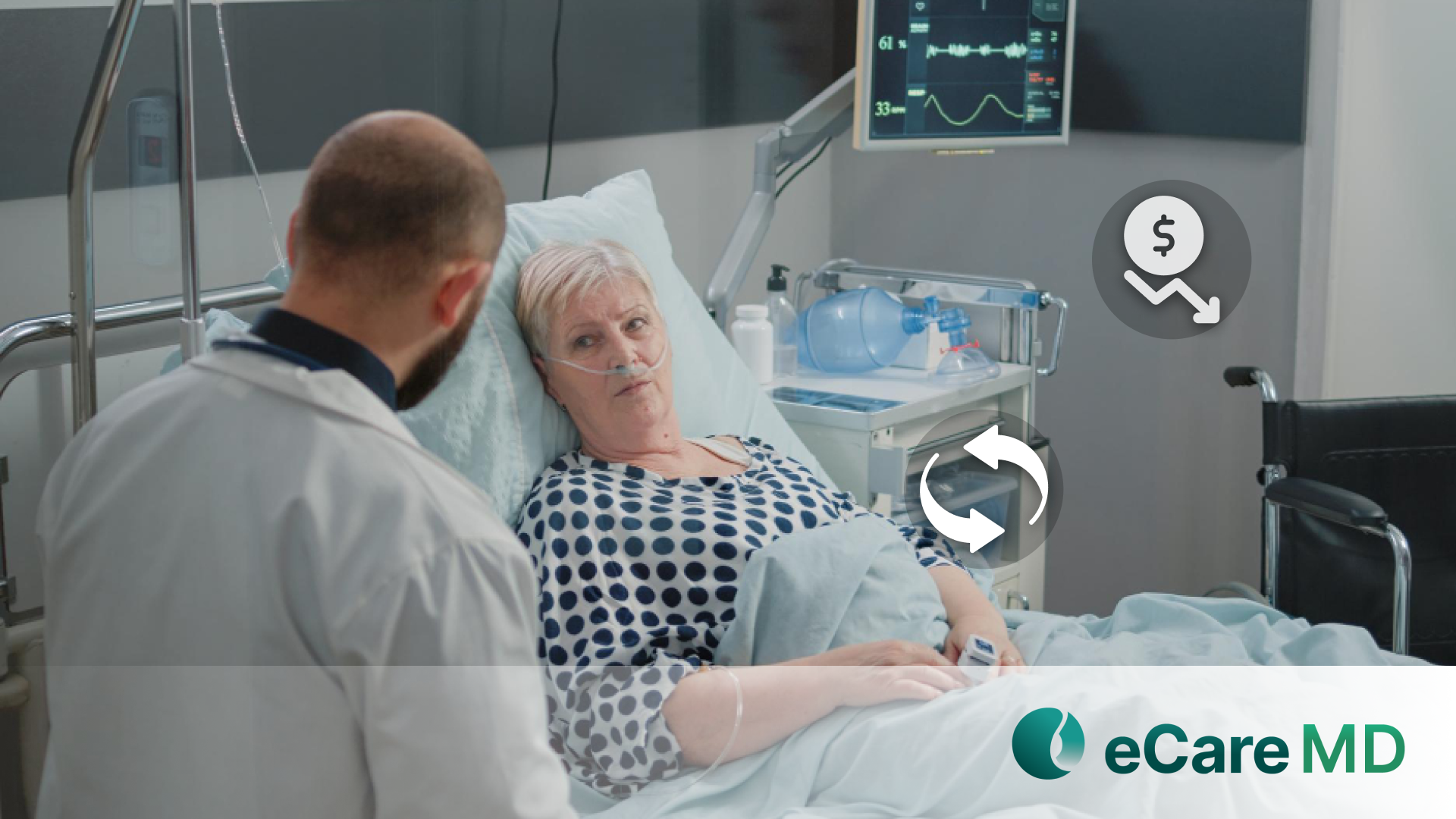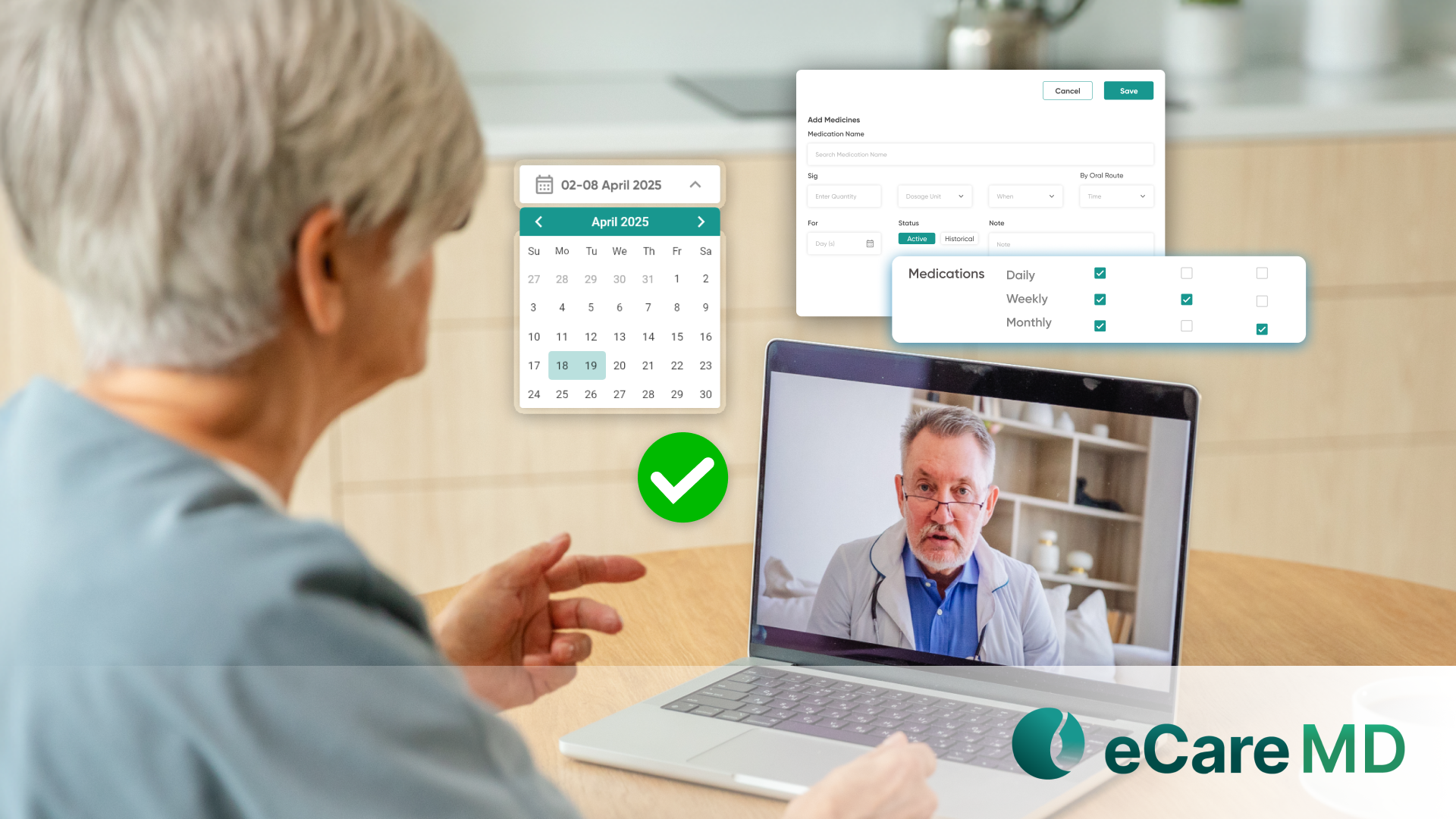Client Overview
The client is a 5-cardiologist specialty practice in Texas, USA, serving 1,200 cardiac patients, with 300 patients diagnosed with heart failure who require intensive monitoring and management. While serving heart disease patients to prevent heart failure, the practices urgently need to implement remote patient monitoring (RPM) to provide continuous monitoring for cardiac patients.
Business Challenges
The cardiology practice faced several critical challenges in managing heart failure patients that were compromising patient safety and creating revenue loss as below;
1. Inability to Track Daily Heart Rate and Symptom Fluctuations Leading to Frequent Hospitalizations
The practice monitored cardiac patients during only office visits, missing critical daily vitals and symptoms, which changes patients’ daily health differences in heart rate and symptoms related to it. Patients would notice the difference in health during office visits and at home. Without continuous monitoring, physicians were unable to detect early signs of heart failure, resulting in 85 preventable hospitalizations within a year and compromising patient safety through delayed interventions.
2. 40% Readmission Rate Within 30 Days Creating Financial Loss
The practice experienced significantly high readmission rates, with 40% of heart failure patients returning to the hospital within 30 days of discharge. These readmissions resulted in frequent annual financial loss, while also indicating poor care quality and patient outcomes. The high readmission rate lowers the practice's reputation and decreases value-based care contracts.

3. Patients Unable to Recognize Early Warning Signs of Cardiac Decompensation
Heart failure patients lacked in education and tools to identify early symptoms of their critical condition, such as sudden weight gain, increased shortness of breath. Many patients ignored or didn't recognize these warning signs, leading to delayed medical attention and emergency hospital admissions. The practice documented 60% of heart failure hospitalizations, which could have been prevented with early identification and intervention.
4. Administrative Burden of Frequent Office Visits for Routine Monitoring
The patients were used to requiring frequent office visits for weight checks, symptom assessment, and medication adjustments. These routine monitoring visits consumed 40% of appointment time, minimizing visits for other cardiac patients and creating difficulty in managing large appointments. Clinical staff spent more time on routine monitoring tasks rather than complex clinical care, while patients faced inconvenience during their office visits.
Solution
After recognizing the critical need for continuous heart failure monitoring and patient management, the client is looking for integrated care coordination software, where Medarch Inc comes in place, where Medarch’s business analyst team offers a demonstration and a free trial of their latest tech build software “eCareMD”. After reviewing the core functionalities of the software, the client has partnered with Medarch to implement the "eCareMD" RPM platform, specifically designed for comprehensive cardiac care management.
Solution Highlighted
The eCareMD implementation turned out to be a big success, as the client's key business problems were solved by providing an integrated solution for their clinical team’s day-to-day workflows with below key solutions;
1. Heart rate and Symptom Monitoring with Connected Device Integration
The eCareMD platform provides device integration for heart rate and symptom tracking that automatically transforms vital readings and symptom reports to the care team members. Patients receive automated daily reminders to record their heart rate within their wearable devices, such as a blood pressure monitor (BPM), smart watch, to take their blood pressure and heart rate data, which is instantly available to clinical staff through a centralized dashboard.

2. AI-Powered Heart Failure Decompensation Prediction System
The platform includes advanced artificial intelligence that continuously analyzes patient weight trends, symptom patterns, and medication adherence data to predict heart failure e before clinical symptoms become critical. The AI system identifies patterns in daily data that indicate early symptom detection, automatically generating risk scores and recommendations to prevent hospitalizations before they occur.
3. Comprehensive Heart Rate Tracking and Cardiac Rhythm Analysis
eCareMD includes continuous heart rate monitoring through medical device integration that tracks heart rate patterns as a monitor to cardiac function. The system provides real-time cardiac analysis and alerts provider staff to dangerous heart readings, enabling immediate intervention for life-threatening conditions.
4. Automated Clinical Alerts and Escalation Protocols
The platform includes comprehensive alert system specifically designed for heart failure management, notifying clinical staff immediately when patients have random weight gain , critical symptoms, or dangerous heart rate patterns. Alert are customized based on individual patient risk factors and clinical history, ensuring appropriate treatment and timely intervention.
Value Added
1. Achieved 70% Reduction in Heart Failure Hospitalizations Within 12 Months
The continuous monitoring and AI capabilities helped the practice to reduce heart failure hospitalizations from 85 to 26 annually, resulting in a 70% decrease in heart failure hospitalizations. Early detection of symptoms allowed for timely medication adjustments and interventions that prevented critical conditions, significantly improving patient outcomes and reducing healthcare costs.
2. Reduced 30-Day Readmission Rate to 12% with Cost Savings
The proactive monitoring system decreased the practice's heart failure readmission rate from 40% to 12%, achieving better than average performance. This improvement resulted in annual cost savings through boosted reimbursement and improved value-based care, while maintaining clinical quality and patient safety outcomes.
3. Enhanced Patient Self-Management and Early Recognition of Symptoms
The daily monitoring tools and automated education content improved patient awareness of heart failure symptoms, with 94% of patients now able to recognize early warning signs of critical conditions. Patient engagement in self-care increased significantly, with daily weight monitoring, resulting in better overall cardiac health management.
4. Improved Clinical Efficiency and Reduced Administrative Burden
The automated monitoring system eliminated 60% of routine office visits for heart failure monitoring, helping providers to manage office visits more easily. Clinical staff productivity increased by 45% as they could focus on high-risk patients and meaningful interventions, while maintaining patient care quality through technology-enabled remote monitoring.

